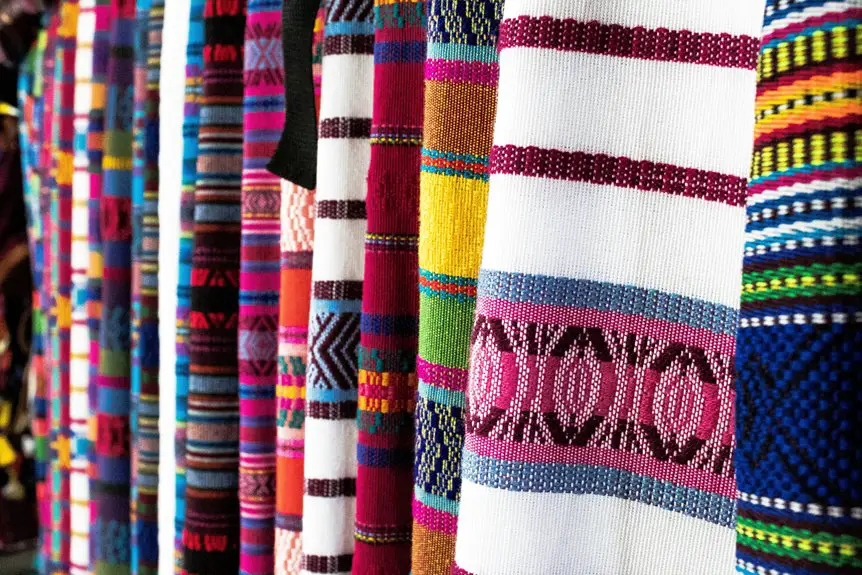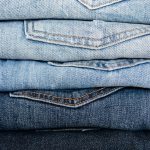You’ll see the nonwoven fabrics market grow fast thanks to rising demand in healthcare, hygiene, and automotive sectors. Innovations in sustainable and biodegradable materials are reshaping production, cutting environmental impact while boosting performance. Nonwovens are essential for medical supplies, lightweight vehicles, and construction projects. Though challenges like raw material costs and regulations exist, advances in technology and expanding markets offer great potential. Keep exploring to uncover what’s driving these exciting changes and opportunities ahead.
Table of Contents
Key Takeaways
- Growing demand in healthcare, hygiene, and automotive sectors drives significant market expansion and innovation in nonwoven fabrics.
- Advancements in biodegradable fibers and sustainable production methods are key future trends reducing environmental impacts.
- Integration of smart textiles and nanofibers enhances functionality and meets specific industry requirements.
- Increasing applications in construction and geotextiles support infrastructure development and environmental protection.
- Regional growth varies with Asia-Pacific leading demand, Europe emphasizing regulations, and North America focusing on sustainability.
Market Drivers and Growth Factors
Although the nonwoven fabrics market faces challenges, several key drivers are fueling its rapid growth. You’ll find rising demand in healthcare, hygiene products, and automotive sectors greatly boosts market expansion.
As you rely more on disposable medical supplies and personal care items, nonwoven fabrics offer the perfect blend of durability and cost-effectiveness.
You’ll also notice increased environmental awareness pushing manufacturers to adopt biodegradable and recyclable nonwoven materials, aligning with sustainability goals.
Plus, growing urbanization and population growth mean more infrastructure and consumer goods, which use nonwoven fabrics extensively.
When you combine these factors, it’s clear why the market keeps expanding. Understanding these drivers helps you grasp the evolving landscape and anticipate future opportunities in the nonwoven fabrics industry.
Innovations in Nonwoven Fabric Technologies
You’ll notice that advanced fiber materials are pushing nonwoven fabrics to new levels of performance.
Sustainable production methods are also reshaping how these fabrics are made, reducing environmental impact.
Plus, smart textile integration is adding functionality that wasn’t possible before.
Advanced Fiber Materials
As nonwoven fabric technologies evolve, advanced fiber materials play an essential role in driving innovation and performance improvements.
You’ll notice that manufacturers now incorporate fibers like nanofibers, bicomponent fibers, and carbon fibers to enhance strength, flexibility, and functionality. These fibers allow nonwoven fabrics to meet specific industry demands, from medical supplies requiring high filtration efficiency to automotive components needing durability and lightweight properties.
By using such materials, you can create fabrics with improved thermal resistance, moisture management, and antimicrobial features. In addition, advanced fibers open up new applications, enabling you to design nonwoven products that offer superior performance without compromising comfort or cost-effectiveness.
Embracing these materials means staying ahead in a competitive market driven by constant technological advancements.
Sustainable Production Methods
When you explore sustainable production methods in nonwoven fabric technologies, you’ll find innovations that reduce environmental impact without sacrificing quality. You can switch to bio-based fibers, recycle materials, and use energy-efficient processes. These methods not only lower carbon footprints but also meet rising consumer demands for eco-friendly products.
| Method | Benefit |
|---|---|
| Bio-based fibers | Renewable, biodegradable |
| Mechanical recycling | Waste reduction, cost savings |
| Waterless bonding | Lowers water consumption |
| Energy-efficient drying | Cuts energy use, reduces emissions |
Smart Textile Integration
Although nonwoven fabrics have long been valued for their versatility and cost-effectiveness, their integration with smart textile technologies is transforming how you experience everyday materials.
You’ll find nonwovens embedded with sensors that monitor health, adjust temperature, or even change color based on your environment. These innovations make fabrics more interactive, enhancing comfort and functionality in clothing, medical products, and home textiles.
By combining lightweight, breathable nonwovens with electronic components, manufacturers create smart textiles that respond in real-time. This shift means you’ll enjoy fabrics that do more than just cover or protect—they actively engage with your needs.
As the technology advances, you can expect smarter, more adaptive nonwoven products to become a seamless part of your daily life.
Sustainability and Eco-Friendly Materials
You’ll find that biodegradable fiber innovations are reshaping the nonwoven fabrics market by reducing environmental impact.
Recycling and waste reduction efforts are becoming key strategies for manufacturers aiming to cut down landfill contributions.
Plus, integrating renewable resources is helping companies create eco-friendly products without sacrificing performance.
Biodegradable Fiber Innovations
As the demand for sustainable products grows, the nonwoven fabrics market is rapidly embracing biodegradable fiber innovations.
You’ll find that companies are developing fibers from natural sources like cornstarch, bamboo, and sugarcane, which break down quickly without harming the environment. These fibers maintain the strength and versatility you expect from traditional materials but decompose in composting conditions, reducing long-term waste.
Innovations in polylactic acid (PLA) and other bio-based polymers are also giving you options that perform well in hygiene, medical, and packaging applications.
Recycling and Waste Reduction
When you prioritize recycling and waste reduction, you help transform the nonwoven fabrics market into a more sustainable industry.
By focusing on these efforts, you reduce landfill waste and lower environmental impact. Manufacturers and consumers both play key roles in this shift. You can expect advances that make recycling easier and waste minimal.
Here are four ways recycling and waste reduction shape the future of nonwoven fabrics:
- Improved recycling technologies that recover more fibers efficiently
- Design for recyclability, simplifying material separation
- Use of post-consumer and post-industrial recycled content
- Implementation of take-back programs to close the loop
Renewable Resource Integration
Although shifting to renewable resources can be challenging, integrating them into nonwoven fabrics offers a clear path toward sustainability and eco-friendly production.
You’ll find that using materials like bamboo fibers, PLA (polylactic acid), and other bio-based polymers reduces dependence on fossil fuels. These renewable inputs not only lower the carbon footprint but also enhance biodegradability, making disposal less harmful to the environment.
As you adopt renewable resources, you can meet growing consumer demand for green products and comply with stricter environmental regulations.
Plus, innovations in processing technologies help maintain fabric performance while using these eco-friendly materials.
Applications in Healthcare and Hygiene
Because nonwoven fabrics offer excellent barrier properties and breathability, they play a crucial role in healthcare and hygiene products. When you use these fabrics, you benefit from their ability to protect against bacteria, viruses, and fluids while remaining comfortable.
You’ll find them in essential items such as surgical gowns and face masks. Nonwovens also support hygiene by enabling disposable products that maintain cleanliness and prevent contamination.
Here are four key applications you’ll encounter:
- Surgical drapes and gowns that provide sterile barriers
- Face masks that filter airborne particles efficiently
- Disposable wipes for sanitizing surfaces and hands
- Diapers and feminine hygiene products offering absorbency and comfort
These applications highlight why nonwoven fabrics are indispensable in healthcare and hygiene today.
Automotive Industry Demand and Trends
As automotive manufacturers push for lighter, more durable vehicles, nonwoven fabrics have become crucial components in various car parts.
You’ll find these fabrics in headliners, door panels, and insulation, where they reduce weight and improve noise absorption. Their strength and flexibility help enhance vehicle safety while contributing to fuel efficiency.
With electric and autonomous vehicles gaining ground, you’ll see nonwovens playing a bigger role in battery covers and interior comfort. Plus, their recyclability aligns with the industry’s growing focus on sustainability.
If you’re involved in automotive design or production, understanding these trends helps you leverage nonwoven fabrics to meet evolving performance standards and consumer expectations.
The demand for innovative, eco-friendly materials guarantees nonwovens will stay crucial in automotive manufacturing for years to come.
Construction and Geotextile Uses
Nonwoven fabrics play an essential role in construction and geotextile applications, offering solutions that enhance stability, drainage, and soil protection.
Nonwoven fabrics are vital in construction for improving stability, drainage, and protecting soil in geotextile uses.
When you use these fabrics, you improve project durability and reduce maintenance costs. Their versatility lets you tackle various challenges on-site effectively.
Here’s how nonwoven fabrics help in construction and geotextiles:
- Reinforcing soil to prevent erosion and landslides
- Enhancing drainage systems by filtering water while blocking sediments
- Separating different soil layers to maintain structural integrity
- Providing cushioning and protection under roads, railways, and embankments
Challenges Facing the Nonwoven Fabrics Market
While the nonwoven fabrics market has grown rapidly, you’ll face several challenges that could slow progress. Raw material price volatility and environmental concerns top the list. You also have to navigate regulatory pressures and intense competition. Additionally, technological advancements demand continuous investment. Managing these factors effectively is critical to staying ahead.
| Challenge | Impact |
|---|---|
| Raw Material Costs | Increases production expenses |
| Environmental Concerns | Pushes for sustainable solutions |
| Regulatory Compliance | Requires adapting processes |
| Market Competition | Pressures pricing and innovation |
| Technology Upgrades | Necessitates ongoing investment |
Regional Market Dynamics and Key Players
Addressing challenges like raw material costs and regulatory pressures requires understanding how different regions approach these issues.
You’ll find that North America focuses on innovation and sustainability, pushing companies to adopt eco-friendly materials.
Europe emphasizes strict regulations and quality standards, driving market players to guarantee compliance and product safety.
Meanwhile, Asia-Pacific experiences rapid demand growth, especially in healthcare and hygiene sectors, making it a hotspot for production and investment.
Finally, Latin America is expanding steadily, with local manufacturers gaining ground by catering to regional needs.
- North America leads in sustainable product development.
- Europe enforces rigorous regulatory frameworks.
- Asia-Pacific drives volume growth through healthcare demand.
- Latin America grows via localized manufacturing.
Understanding these dynamics helps you navigate the competitive landscape effectively.
Future Outlook and Emerging Opportunities
As technological advances accelerate, you’ll find new opportunities emerging across the nonwoven fabrics market. Innovations in biodegradable materials and sustainable production methods are opening doors to eco-friendly products that meet rising consumer demand.
You’ll also see growth in sectors like healthcare, hygiene, and filtration, where nonwovens offer unmatched functionality. By embracing digital manufacturing and automation, you can boost efficiency and reduce costs, making your offerings more competitive.
Growth in healthcare and filtration sectors, plus automation, enhances efficiency and competitiveness in nonwoven fabrics.
Additionally, expanding into emerging markets with growing industrial and consumer bases presents lucrative prospects. Staying agile and investing in research will help you capitalize on these trends.
Ultimately, your success will depend on how well you adapt to shifting market needs and leverage new technologies to create value-driven, sustainable solutions.
Frequently Asked Questions
How Are Nonwoven Fabrics Recycled After Use?
You recycle nonwoven fabrics by first sorting them, then cleaning to remove contaminants. Afterward, you shred or melt them into fibers or pellets, which you can reuse in new products, reducing waste and conserving resources.
What Are the Common Manufacturing Defects in Nonwoven Fabrics?
You’ll often encounter defects like uneven fiber distribution, holes, weak spots, and inconsistent thickness in nonwoven fabrics. These flaws usually result from machine issues or material inconsistencies during production, affecting fabric quality and performance.
How Does Nonwoven Fabric Compare to Woven Fabric in Cost?
Think of nonwoven fabric as a quick sketch, while woven fabric’s a detailed painting. You’ll find nonwovens usually cost less since they’re faster to produce, saving you time and money without sacrificing function.
What Safety Standards Regulate Nonwoven Fabric Production?
You’ll find nonwoven fabric production regulated by standards like ISO 9001 for quality, ASTM for testing, and specific safety rules such as OSHA guidelines, ensuring materials are safe, durable, and suitable for intended applications.
Can Nonwoven Fabrics Be Customized for Fashion Applications?
You can customize nonwoven fabrics so wildly, it’s like painting a runway with magic! They adapt to colors, textures, and patterns, letting you create unique, stylish fashion pieces that stand out and feel amazing.
- Nonwoven Fabrics in Agriculture: Crop Covers and Weed Barriers - July 11, 2025
- The Use of Nonwovens in Automotive Interiors - July 11, 2025
- Troubleshooting Common Issues With Nonwoven Fabrics - July 11, 2025







